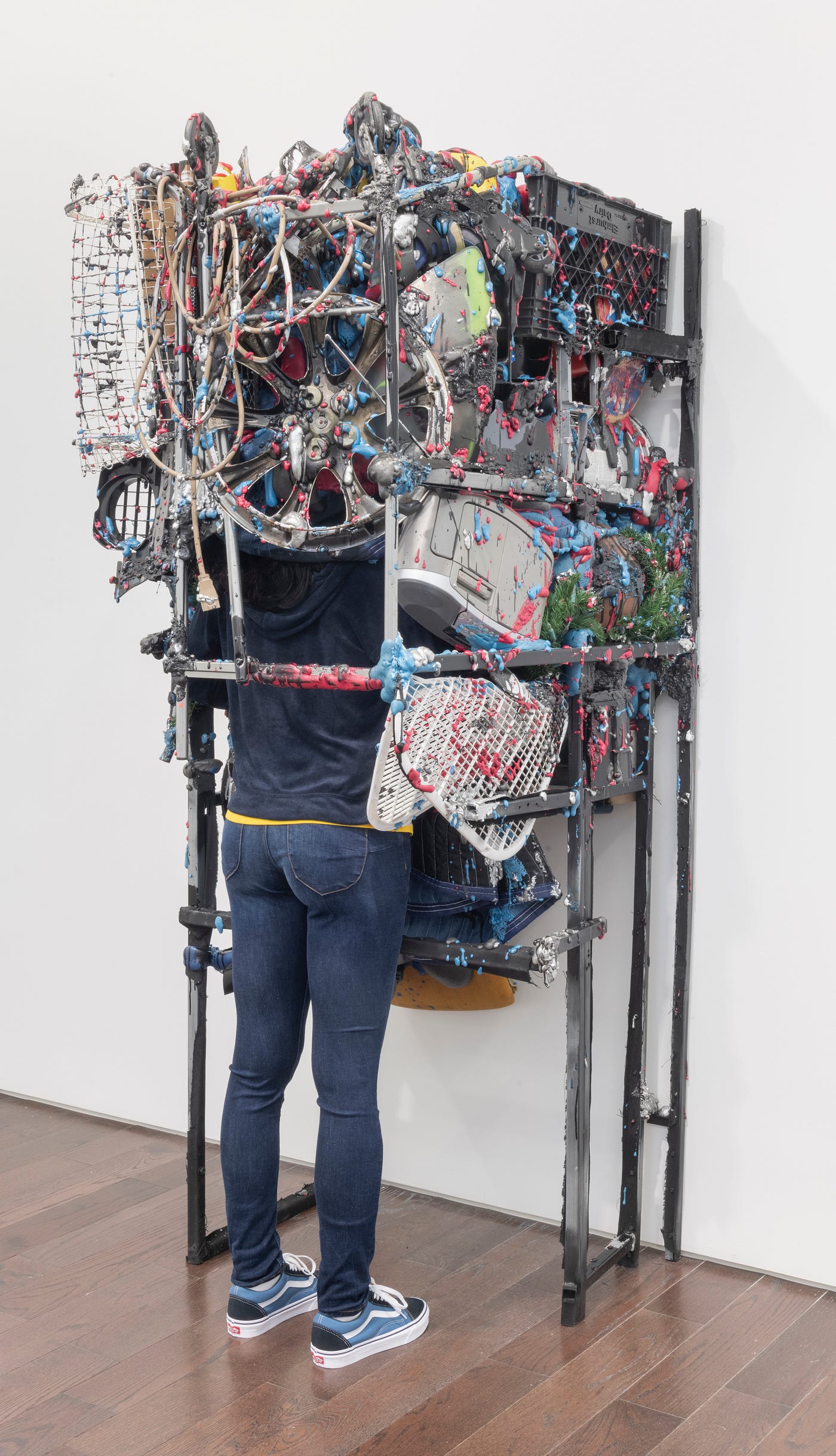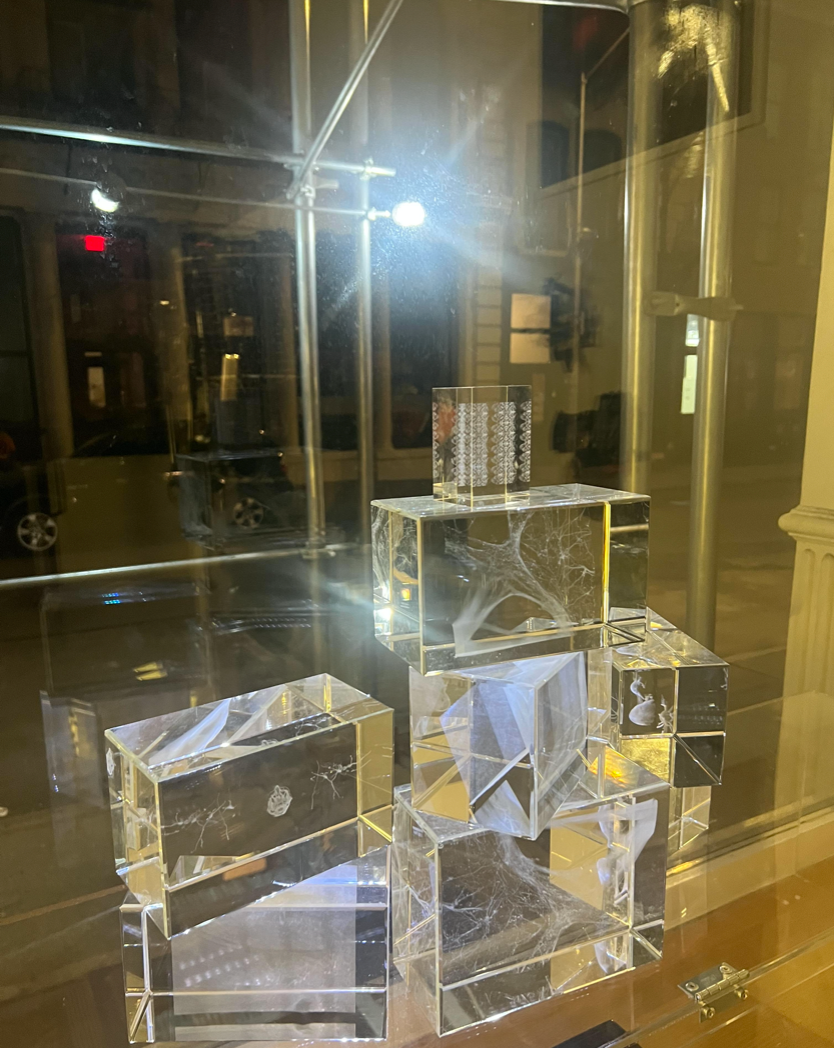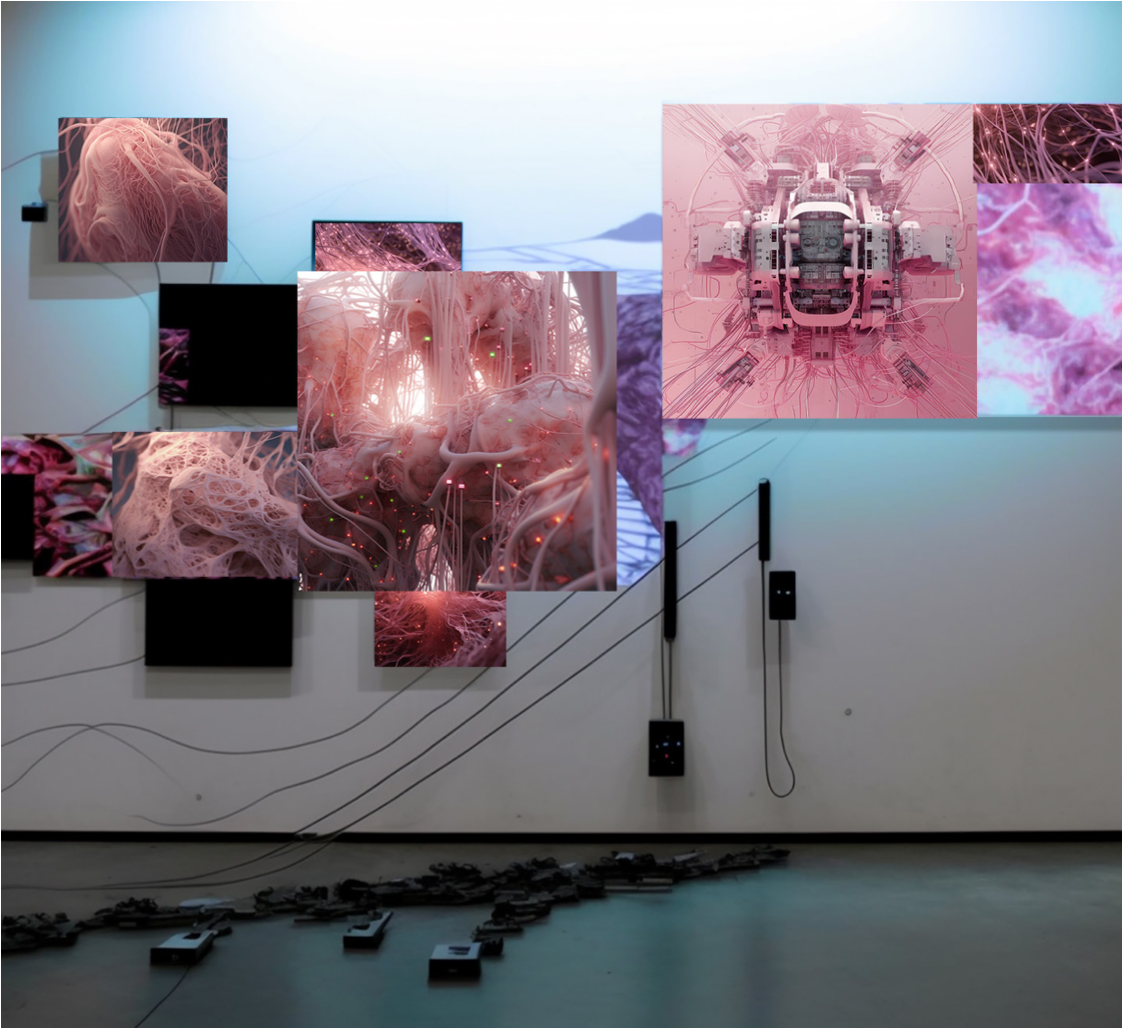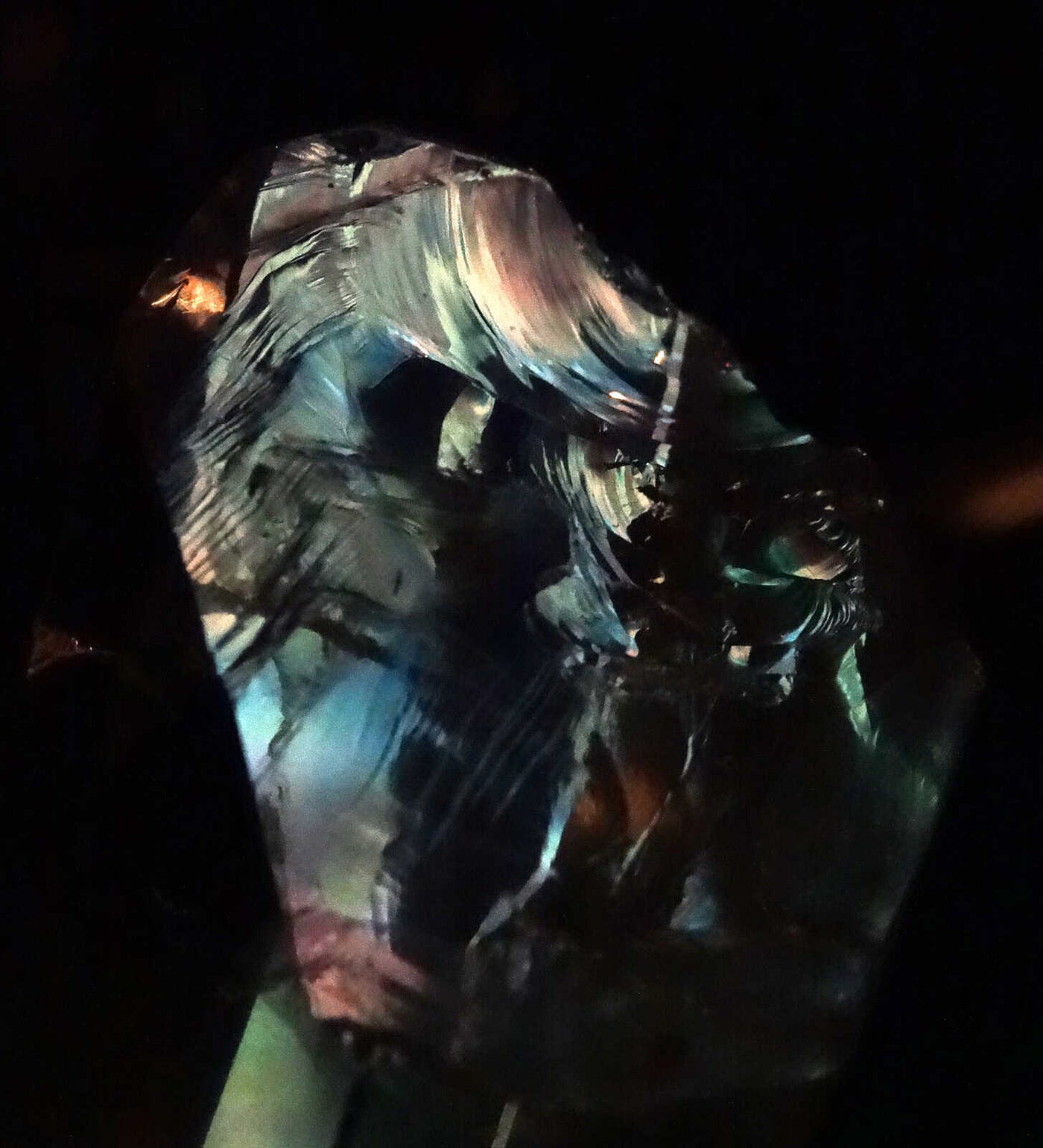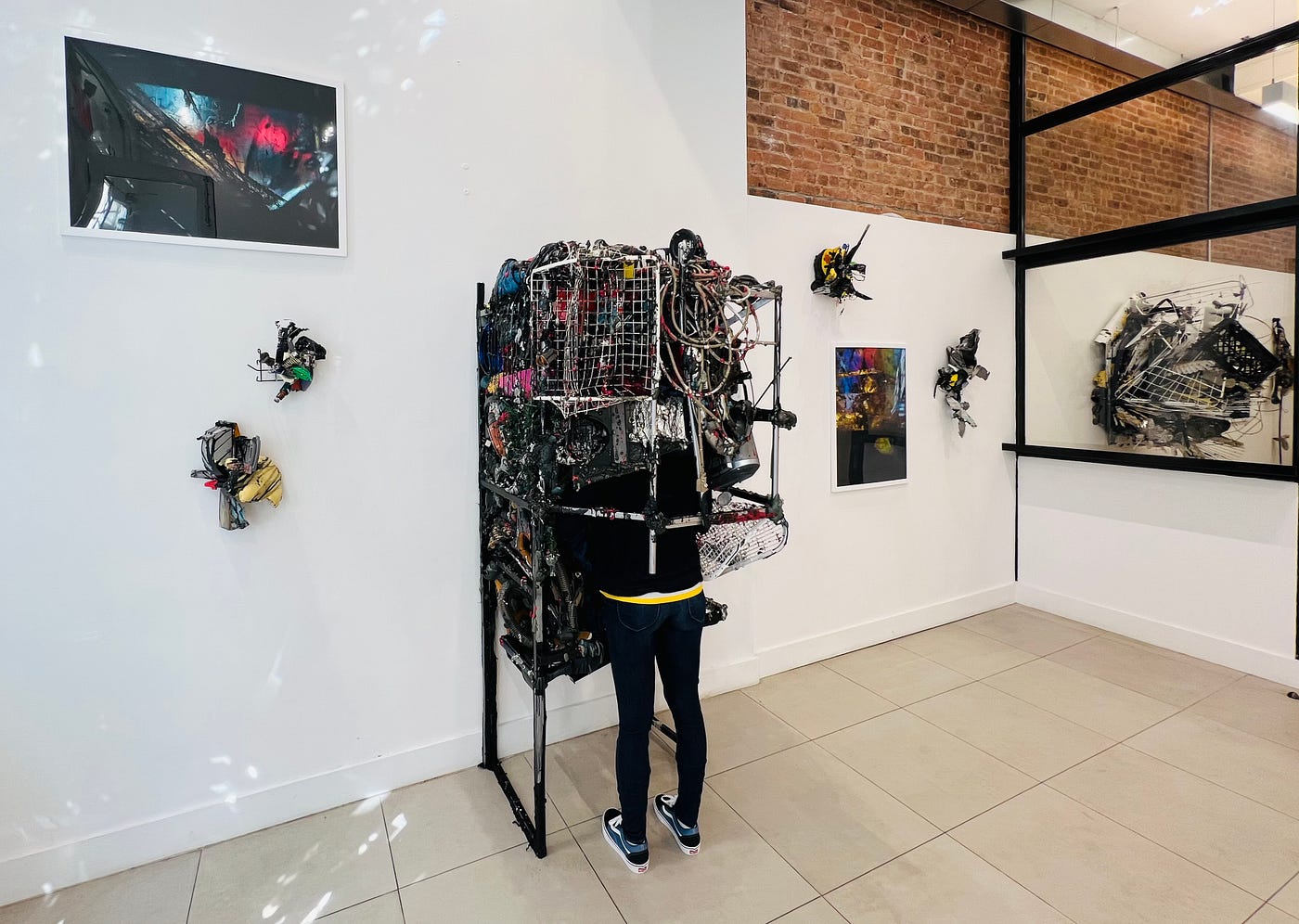The Opening Gallery is pleased to present the Group Exhibition Spectral Senses featuring a selection of works by Stella Ampatzi, Daniel Firman, Nefeli Masia and Eleni Paridi addressing issues of the hauntology and ontology of the senses curated by Dr. Sozita Goudouna.
The group exhibition explores the ways that the impact of new technologies is rearranging the established hierarchy of the senses.
The project draws from the ways our highly mediated world, and technology becomes an important model for the artistic process, while the participating artists explore the implications of the techno-human interface by investigating embodied technology and the technologized body. The auditory, the olfactory and the tactile are similar to the visual crucial sites of embodied knowledge. However, the modernist segmentation of the senses is now giving way to dramatic multi-sensory mixes or transpositions.
The techno-human interface is manifested in Daniel Firman’s installation “2nd hug” whereas a human figure makes an entrance into a door (opening) that consists of an assemblage of worn out objects. The artist reflects upon the logic of assemblage as he is making a statement related to life as to art.
For the artist, offering a second chance as well as a second reading seems a necessary empathetic gesture towards the activation of our senses. Without exception, Firman’s pieces were produced with objects gleaned from the streets of NYC. The sculptures are the reflection of a second acceptance, they seem to be made of intertwining, of fusion, with objects sometimes reduced to their simplest materiality. The pieces have already been exhibited once, thus achieving a second attention, a second look, a second life in a kind of up-cycling.
Biological metaphors often appear in discourses about up-cycling and about the relations of human nature to art. Nefeli Massia’s installation of sculptures intertwines the aesthetic with the biomedical by incorporating real immature cells that are able to make other blood cells that mature and function as needed, namely, stem cells that are used in procedures, such as bone marrow transplants. “Spectral Senses” see biological phenomena and aesthetic practices in a shifting and reciprocal relationship to each other.
Stella Ampatzi’s autonomic networks refer to self-managing or self-organizing networks that can operate and adapt without direct human intervention. In the context of warfare, the use of drones in conjunction with autonomic networks has gained attention and interest in recent years. Autonomic networks can enhance the capabilities of drones by allowing them to communicate, coordinate, and make decisions collectively, leading to improved efficiency and adaptability in warfare scenarios.
By juxtaposing DYSAUTONOMIC vs Autonomic NETWORKS, the artist’s intention is to draw attention to the stark contrast between the funding allocated for dysautonomic diseases and the funding dedicated to the development of autonomic networks in warfare. The purpose is to emphasize the disparity and raise awareness about the discrepancies in financial support between these two areas.
Eleni Paridi is exploring notions of the sensuous as a transcedental form while her new pieces investigate the concept of synasthesia. “Murmures” were originally accompanied by Konstantia Gourzi’s sound composition thus the visual artist has conceived of these works in an expanded context where all the senses converge.
Presently, we notice the ever-closer relationship between the sensuous and the technological. The resulting set of experiences can be called a sensorium, namely, the subject’s way of coordinating all of the body’s perpetual and proprioceptive signals, as well as the changing sensory envelope of the self.
Multiple sensory structures, as well as other modes of perception, the sum of their relations and the ratio of mixture and importance comprise a sensorium. The exhibition pays attention to the otherwise imperceptible hauntings of our senses and of the sensorium.
Intermedia and sensorial artistic practices address the influence of technology on the senses and are often involved in a mediated form of communication (where the viewer is imposed by the work of art), produced, or transmitted not through a direct sensory contact, but by means of an electronic system for the processing of information. The effect of media on our senses (namely the sensorium) is a creation of the physical, biological, social, and cultural environments of the individual organism and its relationships, while being in the world. According to Stanley Cavell, medium (media) is not a given, it is not an a priori; Cavell focused on the communicative and therefore temporal contingency of the word medium, as he wrote, ‘I characterized the task of the modern artist as one of creating not a new instance of his art but a new medium in it.’ In the selected art pieces the sensorial intersects with the intermedial in the ways they construct sentient and experiential aspects of artistic creation and audience reception to challenge our perception of the ontology and hauntology of the artistic medium and of the senses.
Visual Artists Bios
Stella Ampatzi: https://www.stellaampatzi.com
Daniel Firman: http://danielfirman.com
Nefeli Masia: https://nefelimassia.com
Eleni Paridi: https://www.eleniparidi.com
